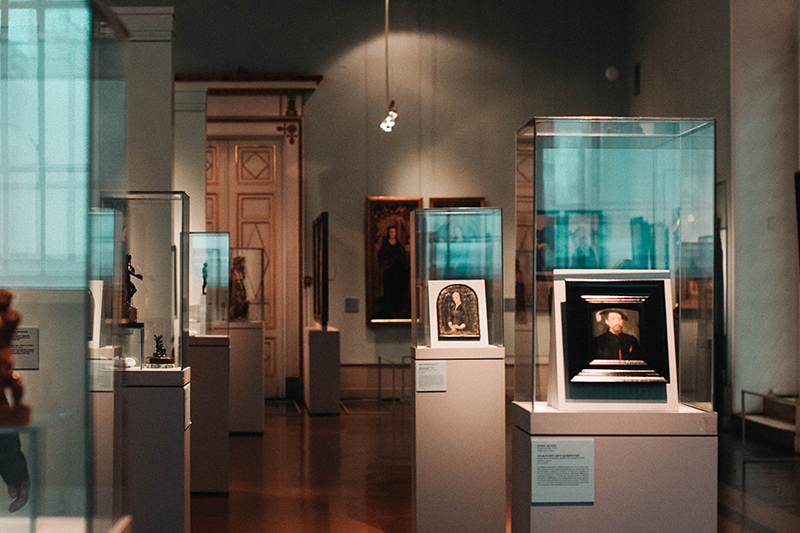
Museums hold the valuable cultural and historical treasures in our society. They come in various types, from art galleries and science museums to history museums, technological establishments, and natural history venues, each with its unique style and content. But what keeps these institutions running smoothly, and why are they so critical in modern society? This article unveils the importance of museum operations, including Time Attendance Systems, and their impact on museum management.
Understanding the Major Types of Museums
There is a wide variety of museums, but some of the most notable types include:
- Art Museums: These institutions focus on the collection, preservation, and display of diverse visual art, ranging from paintings and sculptures to ceramics and textiles.
- Science Museums: These establishments are centered around the exploration and understanding of scientific phenomena and technological advancements, showcasing interactive exhibits and practical experiments.
- History Museums: They delve into the past, revealing various aspects of human history and development, often focusing on a particular era, region, or topic.
- Natural History Museums: These museums cover zoology, botany, geology, and palaeontology, showcasing specimens, fossils, and objects that help visitors understand the natural world around them.
The Importance of Museums in Society
Museums serve as hubs for enriching and preserving cultural heritage and disseminating knowledge. They have several key roles, including:
- Cultural preservation: Museums are essential for conserving artefacts, specimens, and works of art, ensuring that future generations can access and appreciate them.
- Education: By offering a wealth of information and interactive experiences, museums foster creative learning and enhance public understanding of various subjects, thus supplementing classic schooling methods.
- Community engagement: Museums serve as social and community spaces where people can connect, exchange ideas, and debate critical issues.
- Economic contribution: Museums attract tourists, generate revenue, and provide local job opportunities, making a significant economic impact on the local community and beyond.
The Operation of Museums
Museum operations revolve around many aspects, such as collection management, exhibit design, research, and visitor management, all of which require substantial logistical support. Additionally, they need a systematic approach to managing their staff, schedules, and security protocols. This is where sophisticated tools like Time Attendance Systems come to play.
Time Attendance System in Museum Management
A Time Attendance System is a valuable digital tool that assists museum management with employee scheduling, record keeping, and ensuring that museum operations remain streamlined and efficient.
Benefits of Time Attendance System in Museums
- Accuracy and efficiency: Time Attendance Systems provide accurate, real-time data on employee work patterns, ensuring that all staff is correctly utilized and minimizing manual errors in payroll calculation and administration.
- Streamlined scheduling and staff allocation: With clear information about staff availability and working hours, museum managers can effectively allocate resources to meet operational needs and optimize staff distribution across various assignments.
- Compliance with labor regulations: Accurate recording of working hours, overtime, and break times ensures adherence to labor laws and avoids potential liabilities resulting from non-compliance.
- Enhanced security: Implementing Biometric Time Attendance Systems as part of access control measures add an extra layer of security, preventing unauthorized access to sensitive areas or valuable exhibits.
- Conducive working environment: Ensuring fairness in employee scheduling and working hours promotes a positive work atmosphere, resulting in greater job satisfaction, reduced staff turnover, and a more efficient workforce.
- Cost-effective: Time Attendance Systems eliminate the need for manual record-keeping and reduce labor-intensive payroll processes, saving valuable resources and allowing museums to focus on more essential tasks.
In conclusion, Time Attendance Systems play a vital role in enhancing museum management by streamlining staff scheduling, improving payroll efficiency and accuracy, and ensuring compliance with labor regulations. By integrating these powerful tools into museum operations, these essential cultural institutions can efficiently navigate the complexities of staff management and dedicate more time and effort to their missions: preserving, showcasing, and interpreting the wonders of art, science, history, and nature.
About Clockgogo
A cloud-based time attendance management system aims to make time tracking more easy and effective. Powered by the patented 4-level verification technology, Clockgogo provides HR staff with a peace mind upon time card management.
Fake GPS, buddy punching, hefty hardware costs, clumsy installation will not be problems anymore. With flexible and user-friendly roster planning and reporting capabilities, calculation of work hour, overtime and other time attendance results is just a click away.
Time card and time attendance results can also be retrieved through API for third-party HCM / HRIS / HRMS / HR system integration (e.g. Workday, Peoplesoft etc.).
Since its launch back in 2016, Clockgogo has already processed more than tens of millions faces and is widely adopted among global brands.

